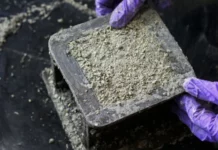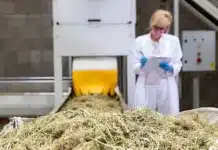I’ve been glued to the television and internet reports about the unfolding disaster in Japan. First an 8.9 magnitude earthquake strikes near the island nation, then a tremendous tsunami washes ashore and leaves an estimated 10,000 dead and thousands more missing. Now the failure of power and back-up cooling units has led to potential meltdowns in the country’s nuclear reactors.
| (CleanEnergy.org) As reported in the New York Times today: two reactors at the Fukushima Daiichi plant 170 miles north of Tokyo appear to have suffered partial meltdowns and three reactors at the nearby Fukushima Daini plant are dealing with failures in the cooling system. Releases of volatile radioactive elements have occurred, though the exact amounts are not yet known. Reports have stated that radiation levels have exceeded permissible limits and over 200,000 people living around the two nuclear power plants have been evacuated. There are reports that several plant workers have experienced significant radiation exposure, a confirmation that at least one worker has died and more than 160 people outside of the plant are also contaminated with radioactivity. Radioactive cesium has been measured, a sure sign that the nuclear fuel has been damaged. |
I’ve been teased by friends and family that no matter what the story is on the news, I can find a way that it ties to marijuana. This story is no different, though I preface my tie-in by expressing the sincerest condolences for the people of Japan (including Japanese cannabis activists Gomyô, Hannabis, the Hoodie Monks, and Taku) and the horror they’re dealing with and will continue to deal with for months. The tie-in between marijuana and Japan can be found in the efforts to clean up the soil following the 1986 Chernobyl nuclear disaster in the Ukraine.
| (McGraw-Hill Higher Education) In 1989, three years after the explosion, the Soviet government asked the International Atomic Energy Agency (IAEA) to assess the radiological and health situation in the area surrounding the power plant. Among the most significant findings were radioactive emissions and toxic metals–including iodine, cesium-137, strontium, and plutonium–concentrated in the soil, plants, and animals. Such substances are potentially harmful to human health. For example, although iodine tends to disappear within a few weeks of exposure, it can be inhaled or ingested and then accumulated in the thyroid gland, where it delivers high doses of radiation as it decays. Since 1991, the Canadian Nuclear Association has noted a marked increase in the incidence of thyroid cancer in the area surrounding the nuclear accident. Cesium-137, radioactive cesium with a mass number of 137, can enter the food chain and deliver an internal dose of radiation before it is eliminated metabolically. |
Getting those toxic and radioactive elements out of the soil is crucial to restoring the ecosystem after a nuclear disaster. A technique called “phytoremediation” uses certain plants to leech these elements from the soil… guess which one is one of the best at that task? Good old industrial hemp, cannabis’ non-drug cousin that our government bans because our police are too uneducated to tell the difference.
| (Hemp.net) In 1998, Consolidated Growers and Processors (CGP), PHYTOTECH, and the Ukraine’s Institute of Bast Crops began what may be one of the most important projects in history – the planting of industrial hemp for the removal of contaminants in the soil near Chernobyl.Phytoremediation can be used to remove radioactive elements from soil and water at former weapons producing facilaties. It can also be used to clean up metals, pesticides, solvents, explosives, crude oil, polyaromatic hydrocarbons, and toxins leaching from landfills.
Plants break down or degrade organic pollutants and stabilize metal contaminants by acting as filters or traps. PHYTOTECH is conducting feild trials to improve the phytoextraction of lead, uranium, cesium-137, and strontium-90 from soils and also from water. “Hemp is proving to be one of the best phyto-remediative plants we have been able to find,” said Slavik Dushenkov, a research scienst with PHYTOTECH. Test results have been promising and CGP, PHYOTECH and the Bast Institute plan full scale trials in the Chernobyl region in the spring of 1999. |
This technique of hemp phytoremediation has applications that extend beyond nuclear accident cleanups. If prohibition on hemp farming were lifted and the industry were allowed to flourish, there could be thousands of new jobs created:
| (Damn Interesting) All in all, the field of phytoextraction seems to be one of the most promising in the efforts to clean up the hundreds of thousands of sites worldwide (30,000 in the US alone, according to the EPA), that require hazardous waste treatment. Even if only modestly successful, the use of plants as contaminant removers could reduce cleanup costs considerably. Even more promising, phytoextraction is only one aspect of the whole field of phytoremediation, in which plants are being used not only to remove toxins, but sometimes to break them down (phytotransformation), enhance microbial activity (phytostimulation), or prevent leaching of contaminants in the first place (phytostabalization). |
In Belarus, site of the original Chernobyl disaster, they are not only using the hemp to clean up the soil, they’re making money on the processing of that hemp into biofuel!
| (CannaZine.co.uk) Belarus Foreign Minister Sergei Martynov said: “We consider ethanol to be one of the most promising and sustainable sources of cheap and nature-friendly energy, and we have several advantages for its production here.”Belarus is probably the only country in Europe with vast territories which can be used for biomass production, the lands affected by the Chernobyl catastrophe 21 years ago.
The Minister concluded: “The Government of Belarus has declared ethanol a priority topic for energy development, so we are very happy today to see the first steps being taken, in what we are sure will be a successful and large-scale development of ethanol production.” Greenfield chairwoman Ann McClain said, “Greenfield’s plan to produce bio-ethanol will use land which has been contaminated by radioactive isotopes to cultivate biomass crops for the ethanol distilleries and at the same time, we believe growing the biomass crops will work to clean up the affected areas”. |
Japan allows for the farming of industrial hemp, but acquisition of a license to do so is very limited, thanks to the US Government forcing the occupied Japanese to sign onto a Cannabis Control Law in 1948 which, like US law, confuses cultivators of non-drug hemp with those growing medicinal marijuana and consumer cannabis.
| (JapanHemp.org) However, the cannabis control law was enacted under GHQ under the United States occupation after World War II in 1948. As a result, an annual license from the prefecture governor was needed to grow hemp . It felt that the farmer was the same as making of the cultivation of hemp the narcotic drug because of the licensing system degree. After that, hemp products of the plant origin disappeared one after another by the spread of the life use goods of the oil origin in postwar days. And the number of farmers who grow hemp has decreased gradually.The hemp agriculture of Japan was 4049.2 ha the total planted acreage of the fiber harvest and the seed harvest, and a scale of 25,118 people in 1950. However, the planted acreage in 1996 was only 12.4 ha according to Ministry of Agriculture and Forestry today. Of that 12.0 ha was grown in Tochigi Prefecture, some 50 km north of Tokyo.
There are only 102 hemp farmers now. (From the Ministry of Health and Welfare Pharmaceutical and Medical Safety Bureau Narcotics Division as of January 1, 1999) |
At least Japan does have some hemp farmers and laws that will allow them to get started on hemp phytoremediation as soon as possible. If an American nuclear reactor melted down we’d have to go through all the politics and argument and legislation necessary to repeal a federal prohibition of industrial hemp as a Schedule I drug before we could plant the first non-drug hemp plants to begin saving the land. Here in Oregon as in a few other American states we have already legalized industrial hemp and could begin planting it the minute the federal prohibition is lifted.
News Hawk- Jacob Husky 420 MAGAZINE
Source: examiner.com
Author: Russ Belville
Contact: Contact Us
Copyright: Clarity Digital Group LLC
Website: Could hemp help nuclear clean-up in Japan?














